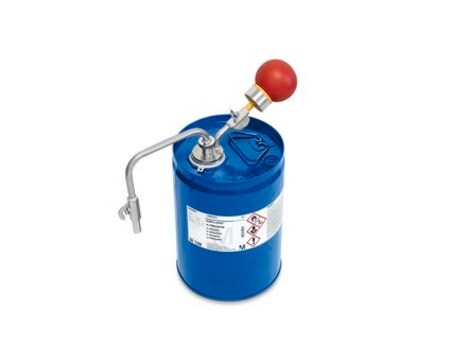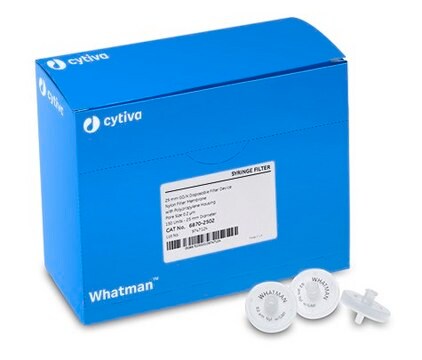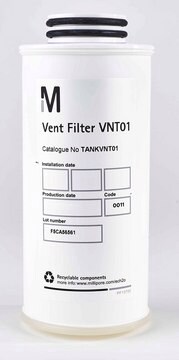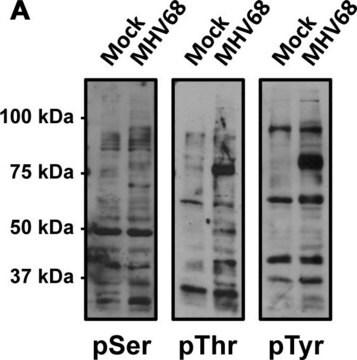AB1607
Anti-Phosphothreonine Antibody
Chemicon®, from rabbit
Synonim(y):
Przeciwciało fosfo-treoninowe
About This Item
Polecane produkty
pochodzenie biologiczne
rabbit
Poziom jakości
forma przeciwciała
affinity isolated antibody
rodzaj przeciwciała
primary antibodies
klon
polyclonal
oczyszczone przez
affinity chromatography
reaktywność gatunkowa (przewidywana na podstawie homologii)
all
producent / nazwa handlowa
Chemicon®
metody
ELISA: suitable
immunohistochemistry: suitable (paraffin)
immunoprecipitation (IP): suitable
western blot: suitable
Warunki transportu
wet ice
docelowa modyfikacja potranslacyjna
phosphorylation (pThr)
Opis ogólny
Specyficzność
Immunogen
Zastosowanie
A 0.5 μg/mL concentration of a previous lot was used in ELISA.
Immunoprecipitation:
A previous lot of this antibody was used in IP.
Immunohistochemistry (paraffin):
Representative image from a previous lot.
Optimal working dilutions must be determined by end user.
Signaling
General Post-translation Modification
Jakość
Western Blot Analysis: 1:500 dilution of this lot detected PHOSPHOTHREONINE on 10 μg of Calyculin/Okadaic Acid treated HEK293 lysate.
Postać fizyczna
Przechowywanie i stabilność
Handling Recommendations:
Upon receipt, and prior to removing the cap, centrifuge the vial and gently mix the solution. Aliquot into microcentrifuge tubes and store at -20°C. Avoid repeated freeze/thaw cycles, which may damage IgG and affect product performance. Note: Variability in freezer temperatures below -20°C may cause glycerol-containing solutions to become frozen during storage.
Komentarz do analizy
Mouse brain lysate.
Inne uwagi
Informacje prawne
Oświadczenie o zrzeczeniu się odpowiedzialności
Nie możesz znaleźć właściwego produktu?
Wypróbuj nasz Narzędzie selektora produktów.
Kod klasy składowania
12 - Non Combustible Liquids
Klasa zagrożenia wodnego (WGK)
WGK 2
Temperatura zapłonu (°F)
Not applicable
Temperatura zapłonu (°C)
Not applicable
Certyfikaty analizy (CoA)
Poszukaj Certyfikaty analizy (CoA), wpisując numer partii/serii produktów. Numery serii i partii można znaleźć na etykiecie produktu po słowach „seria” lub „partia”.
Masz już ten produkt?
Dokumenty związane z niedawno zakupionymi produktami zostały zamieszczone w Bibliotece dokumentów.
Klienci oglądali również te produkty
Nasz zespół naukowców ma doświadczenie we wszystkich obszarach badań, w tym w naukach przyrodniczych, materiałoznawstwie, syntezie chemicznej, chromatografii, analityce i wielu innych dziedzinach.
Skontaktuj się z zespołem ds. pomocy technicznej







![(4R,4′R,5S,5′S)-2,2′-Cyclopropylidenebis[4,5-dihydro-4,5-diphenyloxazole] ≥95%](/deepweb/assets/sigmaaldrich/product/structures/104/825/126fc1d0-0369-45da-95f0-5f745b5cf8fa/640/126fc1d0-0369-45da-95f0-5f745b5cf8fa.png)
